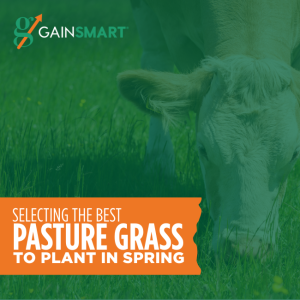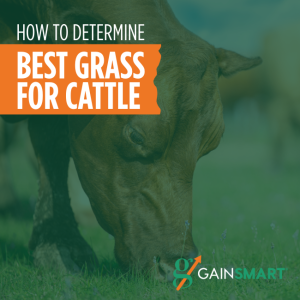
Heat Stress in Cattle
As cattle producers, when the temperature rises, you begin to feel the pressure of keeping the herd healthy and performing. The warmer it gets outside, the more your herd runs the risk of decreased performance, increased sickness and, ultimately, economic losses. Put yourself in the shoes of the stocker operator, this pressure is magnified as you try to keep calves performing through their prime growth period.
Summer brings multiple challenges to cattle producers, including but not limited to insects and heat stress. At BioZyme®, we place a primary focus on animal well-being through the health and nutrition of every animal. That’s why our team wanted to provide some insight on how to treat heat stress in cattle.
What is heat stress?
Heat stress happens the combination of excessive heat and humidity no longer allow the animal to release heat. Typically heat stress isn’t caused by excessive heat alone; but is also triggered by high humidity and a decrease in air movement. Livestock, like humans, are most comfortable in their thermoneutral zone.
The thermoneutral zone (TNZ) for healthy beef cattle is when the animal doesn’t have to expend energy to maintain its normal body temperature. For healthy cattle, the thermoneutral zone is between 32° and 77°F.
It’s important to point out that heat stress varies by geographical location and even breed makeup.
“The unfortunate part is everybody’s situation is different based on regional climate differences,” said Chris Cassady, Ph.D., Director of Beef Technical Sales at BioZyme® Inc.
“Where a backgrounder in Texas might have to deal with severe heat for seven months, someone in North Dakota might have extreme heat for just two months. However, the commonality is understanding the cascade of events that go on with heat stress – symptoms to look for and what to do.”
We can only offer advice on how to treat heat stress in cattle if you know what to look for. Here are 3 signs of heat stress to check for in your stocker or backgrounding operation:
Signs of Heat Stress in Cattle
The summer months can be extra challenging for stockers and fresh-weaned calves out on grass. They already have the stress of weaning and are likely to be transported to a different environment. Then, we add heat, humidity and insects to the stressors.
During the summer especially, producers should take extra care to look over their livestock on a regular basis to monitor factors that can lead to heat stress. Watch for behavioral and physical signs that your animals could be experiencing heat stress so you can effectively mitigate it before it gets worse.
Heat stress can cause substantial setbacks in their health, performance and well-being, especially during hot and humid weather conditions. Recognizing the signs of heat stress in cattle is essential for implementing timely interventions to prevent heat-related illnesses and losses.
Increased Respiration Rate
The first visible sign of heat stress you should look for is an increased respiration rate. Excessive or rapid panting, with extended periods of open-mouth breathing, is a sign of heat stress. Cattle that show this increase in respiration rate, will have increased air volume intake, which can ultimately lead to other sicknesses. With increased air intake, animals are inhaling more dust, dirt, bacteria and viruses into their bodies, which can quickly lead to bigger problems. Elevated respiratory rates indicate the animal’s effort to cool down and maintain thermal equilibrium.
Increased respiration rate is more likely to occur in older cattle or heavier finished cattle. However, it can happen at any age if the heat and humidity are high enough or there are other health issues.
Seeking Shade, Shelter & Water
The second sign of heat stress, and the one most commonly thought of, is animals that seek out shade and water during the peak heat of the day. This disrupts the normal feeding pattern of continuously grazing and consuming smaller meals, which ultimately means cattle are giving up growth and performance.
Eating too much forage all at once, such as at night when it is cooler, can lead to bloat in ruminants, which can lead to more health issues or death. When they bunch up during the day, they are also more likely to be exposed to sickness because of shared germs—think of containing school kids in an enclosed room with no fresh air.
Heat-stressed cattle may seek shade, shelter or cool, shaded areas to escape direct sunlight and reduce heat exposure. Providing adequate shade structures and shelter options can help mitigate the effects of heat stress. Cattle experiencing heat stress may increase their water consumption to maintain hydration and regulate body temperature. Providing access to clean, fresh water is crucial during periods of heat stress to prevent dehydration and electrolyte imbalances.
Decreased Appetite
Just like your appetite is likely suppressed when the temperatures rise, so is the appetite of your cattle. Because they are seeking shade or in ponds during the heat of the day, heat-stressed cattle may reduce their feed intake due to decreased appetite. Reduced feed consumption can lead to decreased nutrient intake and weight loss, impacting overall growth and performance, which is vital, especially for calves just turned out on grass.
Other usual signs include fatigue, drooling, aimless wandering or staggering and ultimately death. In addition, increased body temperature and increased heart rate are also symptoms of heat stress. Recognizing these signs of heat stress in cattle allows producers to implement proactive measures to alleviate heat stress and minimize its impact on animal health and performance. Implementing management practices to reduce heat load is critical for mitigating the effects of heat stress before you need to treat heat stress in cattle.
How to Treat Heat Stress in Cattle
Now that you know what exactly you are looking for, it is important to know how to address heat stress in cattle. Cattle that are not eating or grazing simply are not gaining. And that is an efficiency you can’t risk. Neither is it good for the overall well-being of your herd.
Although preventing heat stress is the best management practice; sometimes you will need to treat your animals for heat stress. Treatment protocols are often the same as preventative measures but with more care and caution. Let’s look at how to treat heat stress in cattle.
Keep Cattle Hydrated
The first step in relieving heat stress is to provide plenty of clean, fresh, cool water. Keeping your cattle hydrated is critical in treating heat stress since dehydrated animals have problems maintaining body temperature.
If possible, provide multiple water sources and spread them across several areas to help eliminate animal crowding at one particular location. Keep water under shade to encourage cattle to gather where it is shaded.
Provide Shade
Sometimes trees are enough to help eliminate heat stress. Cattle grazing in a large open area where trees are not an option might need man-made shade structures. If you have a building that serves as shade, make sure it has proper ventilation and circulation like a fan. An enclosed structure with minimal air movement will only contribute to your animals’ heat.
Limit Working During the Day
Don’t work your cattle during extreme heat. If you need to process or move your livestock, plan any work as early in the morning as possible before the day heats up. Working animals causes stress and combined with heat stress can cause serious issues. If you need to transport your livestock, do so early in the day or later in the evening when the temperature cools.
Reduce Stocking Density
Decrease stocking density or separate cattle into smaller groups to reduce heat stress and competition for resources. Allow sufficient space for cattle to move freely, lie down and access feed and water without overcrowding.
Other Nutritional Considerations
Because we know the value of keeping your stockers healthy and performing during the hottest time of the year, BioZyme has formulated Gain Smart® Stocker HEAT®. This free-choice vitamin and mineral supplement for stocker cattle is designed to maximize efficient gain when temperatures are above 70 degrees.
Gain Smart Stocker HEAT contains AO-Biotics® Amaferm®, a prebiotic research-proven to enhance digestibility and includes organic copper, iodine and zinc for maximum bioavailability and hoof health. It also contains HEAT technology, a combination of essential oils and garlic, to support animals when heat and insects are a challenge.
HEAT provides capsaicin to help maintain circulation to support animal performance in both heat and fescue situations. Capsaicin and Amaferm are both research-proven to help maintain body temperature. HEAT also contains garlic to help deter insects. Keeping insects controlled is important to heat stress because insects like to gather on animals when they bunch up. Insect bites cause added stress and economic losses.
Added Benefits of Amaferm
Feeding Amaferm during summer temperatures is especially beneficial for eliminating internal heat stress. Since Amaferm enhances digestibility, cattle do not work as hard to digest, so they do not expend energy, creating that internal rise in body temperature.
“Feeding Amaferm during heat stress has multiple benefits including improved digestibility, increased energy availability, improved rumen function and decreased loss of performance. The improved digestibility observed with Amaferm provides more energy to the animal during heat stress when intake is reduced,” Dr. Cassady said.
Amaferm is found in all Gain Smart products, a line of vitamin and mineral supplements for stocker cattle that promotes healthy, economical pounds. Additionally, Amaferm is research-proven to increase performance by .25 pounds per day, and that is what every backgrounder should be looking to achieve.
A lowered body temperature has several key benefits. It helps keep those animals out grazing, which means the potential for gaining is greater, even in warmer climates.
Get more Gain Smart Information
The Gain Smart team hopes that you have found more than one solution on how to treat heat stress in cattle. We know that healthy, efficient pounds are important, but they can’t be achieved under stressful conditions.
In addition to Gain Smart Stocker HEAT, we also offer three other Gain Smart formulas to help you succeed with your calves.
We care about cattle’s well-being, so we have provided an extensive network of BioZyme dealers across the country. That way, you can get the Gain Smart products you need to succeed. Locate a dealer near you and get your cattle on Gain Smart today.

